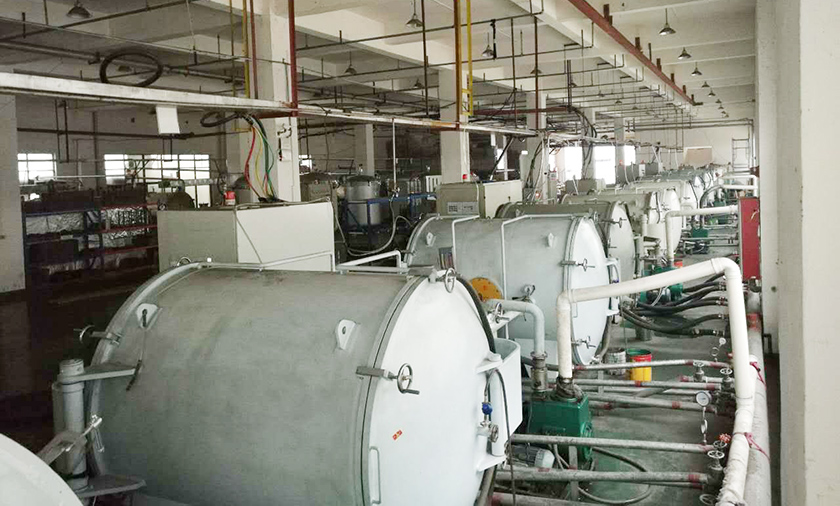Yuanhang Industrial Furnace High Temperature Graphitization Furnace teaches you how to identify the advantages and disadvantages of graphite!
March 09, 2024
1. The flexural strength of the material The flexural strength of a material is a direct reflection of the material's strength and shows the tightness of the material's internal structure. Materials with high strength have relatively good discharge loss resistance. For electrodes with high precision requirements, try to choose materials with better strength. For example: TTK-4 can meet the requirements of general electronic connector molds, but for some electronic connector molds with special precision requirements, TTK-5 material, which has the same particle size but slightly higher strength, can be used. 2. Shore hardness of material In the subconscious understanding of graphite, graphite is generally considered to be a relatively soft material. However, actual test data and application conditions show that the hardness of graphite is higher than that of metal materials. In the special graphite industry, the common hardness testing standard is the Shore hardness measurement method, and its testing principle is different from that of metals. Due to the layered structure of graphite, it has very superior cutting performance during the cutting process. The cutting force is only about 1/3 of that of copper materials, and the machined surface is easy to handle. However, due to its higher hardness, the loss of the tool during cutting will be slightly greater than that of metal cutting tools. At the same time, materials with high hardness have better control over discharge loss. In our company's EDM material system, there are two materials to choose from for materials with the same particle size that are widely used, one with slightly higher hardness and the other with slightly lower hardness to meet the needs of customers with different requirements. need. For example: materials with an average particle size of 5 μm include ISO-63 and TTK-50; materials with an average particle size of 4 μm include TTK-4 and TTK-5; materials with an average particle size of 2 μm include TTK-8 and TTK -9. Mainly considering the preferences of various types of customers for electrical discharge and machining. Yuanhang Industrial Furnace uses a few simple methods to teach you how to identify the advantages and disadvantages of graphite!

3. The average particle diameter of the material The average particle diameter of the material directly affects the discharge status of the material. The smaller the average particle size of the material, the more uniform the discharge of the material, the more stable the discharge situation, and the better the surface quality. For forging and die-casting molds with low surface and precision requirements, it is usually recommended to use materials with coarser particles, such as ISEM-3; for electronic molds with high surface and precision requirements, it is recommended to use materials with an average particle size below 4 μm. To ensure the accuracy and surface finish of the processed mold. The smaller the average particle size of the material, the smaller the loss of the material, and the greater the force between each ion group. For example: It is usually recommended that ISEM-7 is sufficient to meet the requirements for precision die-casting molds and forging molds; but when customers have particularly high accuracy requirements, it is recommended to use TTK-50 or ISO-63 materials to ensure smaller material loss, thus Ensure the accuracy and surface roughness of the mold. At the same time, the larger the particles, the faster the discharge speed and the smaller the loss during rough machining. The main reason is that the current intensity of the discharge process is different, resulting in different amounts of discharge energy. But the surface finish after discharge also changes with the changes in the particles. graphite material 4. Inherent resistivity of materials According to our company's statistics on material characteristics, if the average particles of the material are the same, the discharge speed of a material with a large resistivity will be slower than that of a small resistivity. For materials with the same average particle size, the strength and hardness of materials with small resistivity will be slightly lower than those with high resistivity. That is, the discharge speed and loss will be different. Therefore, it is very important to select materials according to the needs of the actual application. Due to the particularity of powder metallurgy, each parameter of each batch of material has its representative value with a certain fluctuation range. However, the discharge effects of graphite materials of the same grade are very similar, and the difference in application effects caused by various parameters is very small. graphite material The selection of electrode materials is directly related to the discharge effect. To a large extent, the appropriate selection of materials determines the final conditions of discharge speed, processing accuracy and surface roughness. Mastering the above points will be of great help to us in identifying the grade of graphite materials. Zhuzhou Yuanhang Industrial Furnace Technology Co., Ltd. is a new technology enterprise specializing in providing complete solutions for various heat treatment equipment. The company currently focuses on the production of high-temperature Graphitization Furnaces and carbonization furnaces of various specifications, providing customers with high-tech, high-quality, cost-effective heat treatment equipment.



